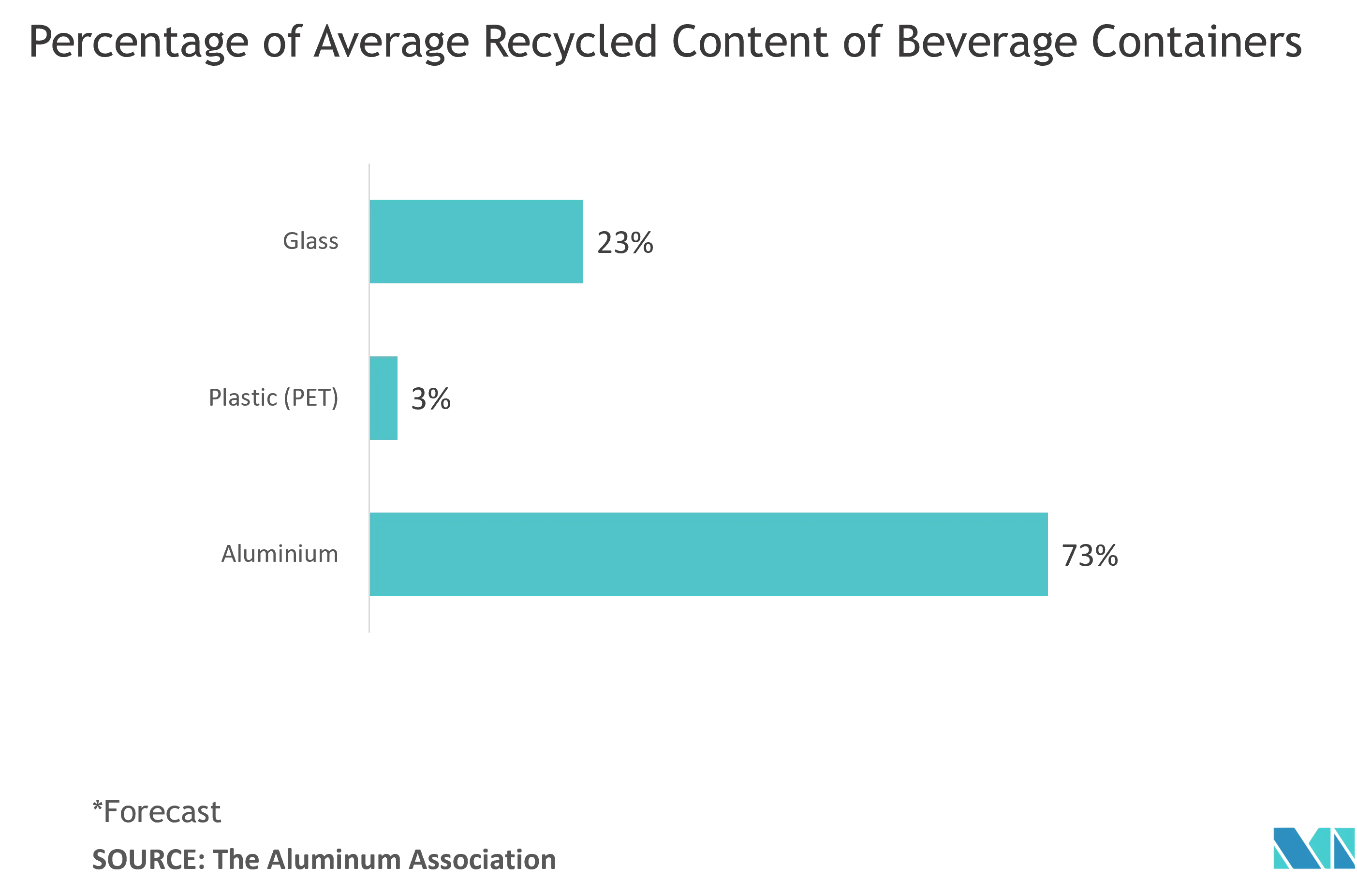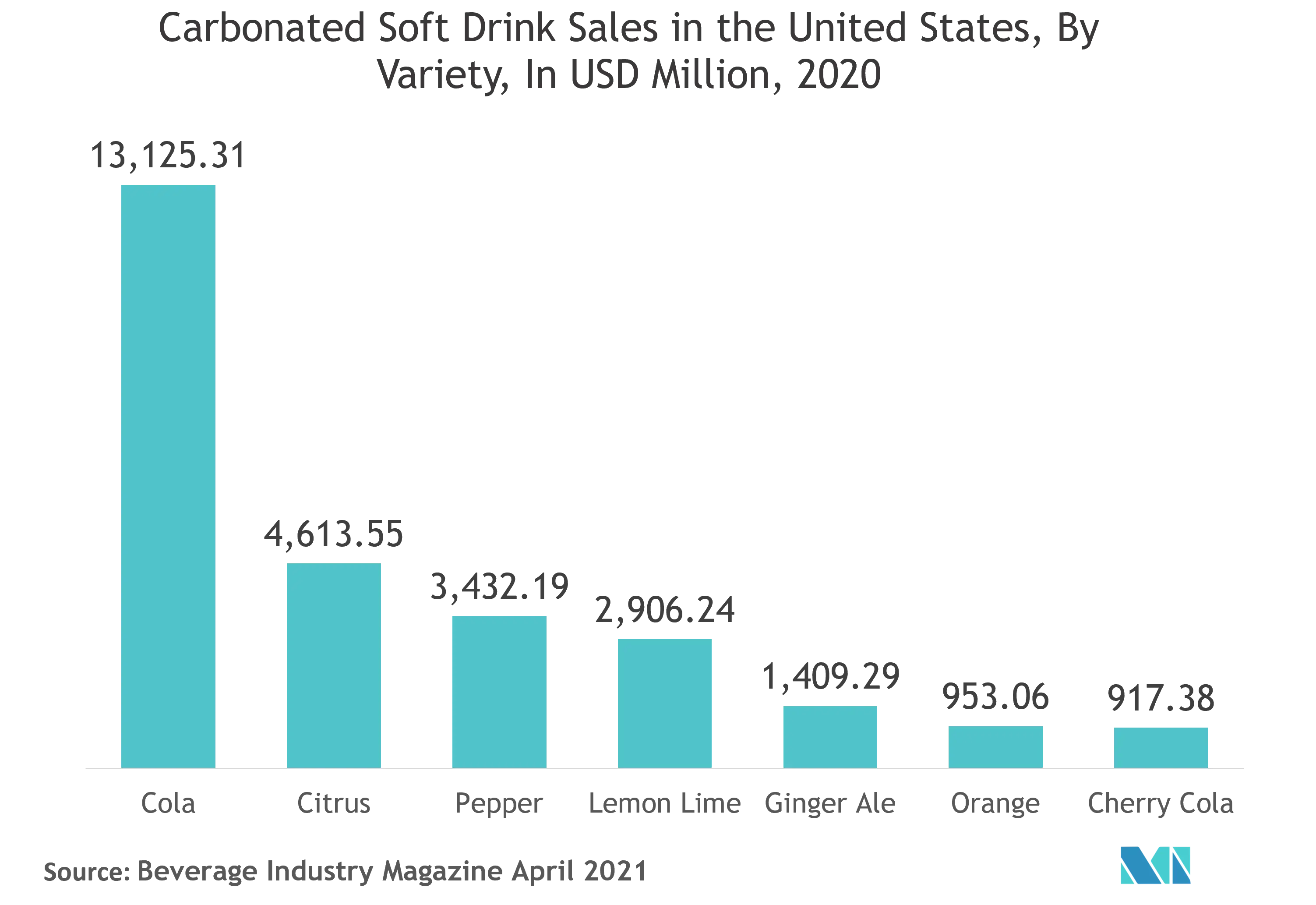Market Trends of United States Aluminum Beverage Cans Industry
This section covers the major market trends shaping the US Aluminum Beverage Cans Market according to our research experts:
High Recyclability Rates of Metal Packaging is Expected to Drive the Market Growth
- Growing environmental concerns around the world have resulted in increasing awareness about the type of packaging materials utilized. High energy consumption of packaging manufacturing is one of the factors pushing recycling. Diminishing natural reserves, global warming, and the impact of plastics on the environment are the key trends influencing consumer demand.
- Initiatives by environmental groups and high exposure to social media have resulted in increased awareness among the users , with most of the population now being aware of the environmental impact and willing to take action to counter these issues. Consumers are demanding for packaging products that cause lower environmental impact. Many users are abandoning plastic usage, while the demand for recycled products is growing. This is creating a high demand for metal packaged products.
- Recyclability of aluminum as a metal is one of the primary factors influencing the consumption of metal cans in the market. Metal cans are 100% recyclable, with an estimated 30% of the total metal in use, being generated from recycling.
- Metal cans, especially aluminum, are the most recycled packaging units. They can be recycled at the end of their lifecycle without degradation in the quality, and that makes them the preferred packaging material for brands across the industries, ahead of other materials, such as plastic and paper. In the United States, a staggering 105,784 aluminum cans are recycled each minute — leading to an overall recycling rate of nearly 50 percent, the highest recycling rate for any beverage container.
- Aluminum beverage cans represent one of the world’s most recycled drinks container, and global recycling rates have now reached 75%. Also due to the infinite recyclability of aluminum, 75 percent of all aluminum produced is still in circulation. This makes Aluminium a good prospective for recycling in the United States and Canada.
- Moreover, metal cans including aluminum have an average 70% collection rate, higher than any other packaging material available in the market. The energy consumed to process recycled metal cans is 5% more than that used in manufacturing primary metal cans. Thus, the industry is making a strong push toward adopting recycling, while government initiatives and consumer support boost this trend.

Carbonated Soft Drinks Holds Significant market Share
- Aluminum cans are commonly used in pressurized bottling like Pepsi, Coke, and carbonated drinks, to hold the pressure and protect the contents in the bottle. The increasing consumption of these drinks in the region gives rise to the increasing need for cans in the sector.
- Also, there was an unprecedented spike in at-home consumption of soft drinks and alcohol in North America because fewer Americans are consuming soft drinks and beer at restaurants and bars because of gathering restrictions related to the Covid-19 pandemic in 2020. The increase in take-home beverage demand also necessitated higher US imports of can sheets. The country relies on a mixture of domestic and imported aluminum beverage can sheet, which are formed into cans by companies such as Ball and Crown.
- The aluminum base for beverage cans consists primarily of aluminum, but it contains small amounts of other metals, including 0.4% iron, 0.2% silicon, 1% magnesium, 1% manganese, and 0.15% copper. A significant portion of the aluminum used in the beverage can industry is derived from recycled material. According to Encyclopedia and various researchers, 95% of all beer and soft drink cans in the United States are made of aluminum. Approximately 25% of the total American aluminum supply comes from recycled scrap, and the beverage can industry is the primary user of recycled material. Some of the manufacturers stated that the aluminum can industry reclaims (recycles) more than 65% of used cans.
- However, with rising health consciousness across the country, there was a reduction in the consumption of beverages such as soft drinks, juicy fruit drinks, energy drinks that have high amounts of sugar, which can impact the demand for cans. Some companies have been launching ‘'zero sugar'’ versions of their carbonated and soft drinks to attract customers, such as Coca-Cola and Pepsi.
- Furthermore, even though the trend of carbonated beverage consumption is lowering through years, Americans continue to drink canned beer and soft drinks while staying at home more, restrictions on recycling programs have caused fewer of those empty used beverage containers (UBCs) to reenter the aluminum supply chain forcing producers of aluminum can sheet in the United States to import aluminum from Latin America to help fill the gap created by UBCs not making their way back to secondary smelters. Thus, the lack of aluminum recycling also had some ripple effects on the studied market.


